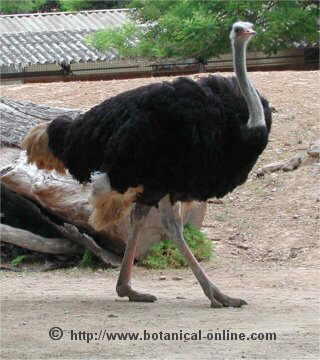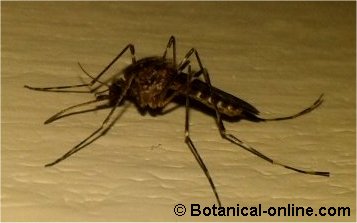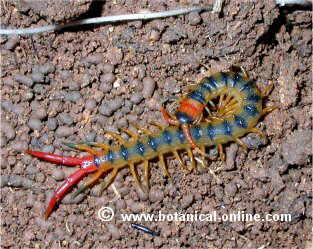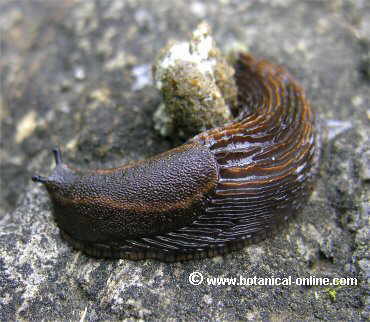Contents
What are armadillos?
Characteristics of armadillos
Common names: Armadillo
– Scientific classification:
Class: Mammalia
Order: Cingulata
Family: Dasypodidae
Features:
- Length: 75 – 90 cm.
- Heigth: 45 cm.
- Weight: 8 – 12 kg.
- Habitat: Scrub-lands, forests rich in underbrush, savannas, steppes…
- Geographic range: Eastern Europe, North and East of Africa, Near East, Middle East and South Asia.
- Behavior: Nocturnal, territorial, gregarious and monogamous species.
- Food habits: Omnivorous (Mainly small mammals, such as hares and rodents, also ungulates, terrestrial birds, insects, fruits and plants, cattle and even carrion).
- Reproduction: Sexual maturity at the second year of life. Gestation: 65 days. Birth: 5 babies on average.
- Enemies: Leopards, lynxes, golden eagles.
- Lifespan: 6 years in the wild, 12 years in captivity.
Physical description of armadillos
How are these animals?
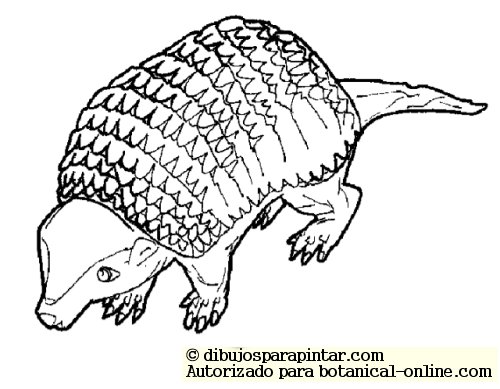
Armadillo body is covered with hardened plates with defensive function. These hardened plates form a kind of shell with resistant properties.
The elongated head of armadillos ends in a conical snout, crowned with large and oval striking ears, covered with irregularly arranged small bone plates.
Andean hairy armadillo species has a hairless appearance, since these mammal shows a series of thin hairs on the edges of the plates and all over the body. On the other hand, the appearance of this armadillo species is very discreet in terms of its coloration, because it is lighter dark brown in the edges of its body.
The name of armadillo was given to these small-sized mammals by Spanish explorers, perhaps thanks to the resemblance of the plates of the armadillos body with the armor from which the European conquerors would be protected.
Not all armadillos are of small dimensions. Giant armadillos weigh almost 50 kg and measure between 75 and 100 cm in length, with a tail that reaches 50 cm. In the opposite side, we have pink fairy armadillos are situated, measuring only between 7 and 11 cm, since they are the smallest armadillo species in the world.
Armadillo behavior
Armadillo has the habit of destroying anthills and termite mounds, in search of food, digging for it the ground or breaking up the rotten logs.
When armadillos are threatened and they just can’t escape, these animals roll over their body forming a ball so that they are protected by their hard plates.
Armadillo adaptations
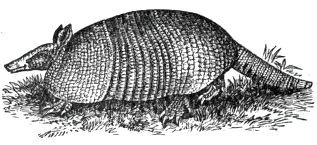
These mammals search for food by digging in the ground with their front legs provided with strong nails adapted for this purpose.
Andean hairy armadillos use the strong nail of their third finger as a shovel.
Giant armadillos prefer to flight before attack when a predator is close to them. Then, these animals take a refuge in a burrow. When they can not flee from theirs enemy, they roll over themselves seeking protection in their hard shell, like hedgehogs.
Where do armadillos live?
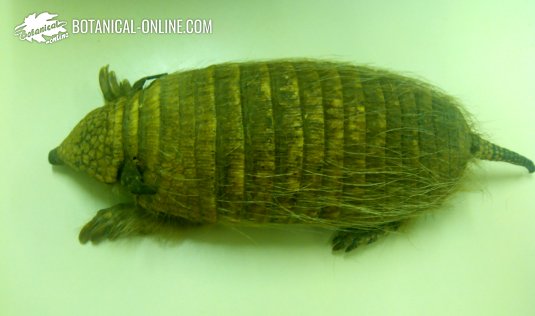
Armadillos live in the arid or semi-arid zones of the planet. Only rarely they venture into the forests.
In contrast, Giant armadillos live in the jungles, although they also venture into the savannas and other lands of open vegetation.
Armadillo food habits
Although armadillos diet is relatively varied, they eat mainly insects and other invertebrates. Additionally, they feed on plant material and, to a lesser extent, on small vertebrates.
These vertebrates are omnivorous, because in addition to feeding on insects and their larvae, they sometimes eat plants.
Armadillo enemies
The main enemies of armadillos are human beings, who uncontrollably hunt them to obtain their appreciated meat.
Natural enemies of this mammal species are feline species, such as jaguars and cougars, as well as wild canids, such as coyotes or even dogs.
Usefulness of armadillos
Pichis or dwarf armadillos are very appreciated for their meat.
Generally, armadillo meat is consumed by humans.
![]() More information on other wild animals.
More information on other wild animals.


